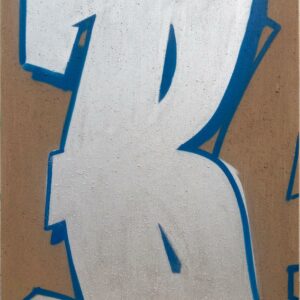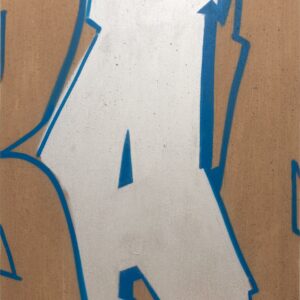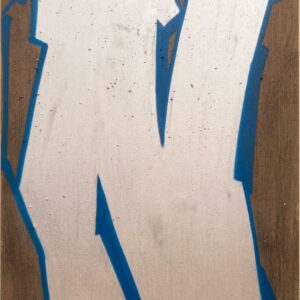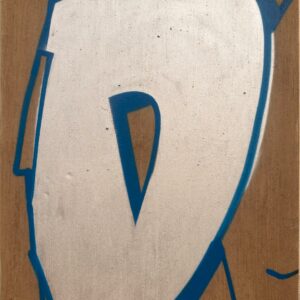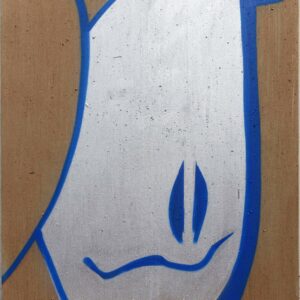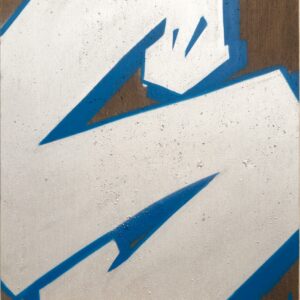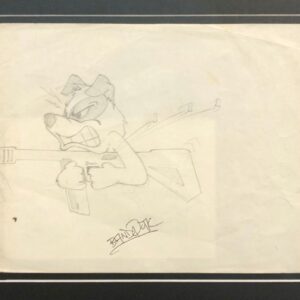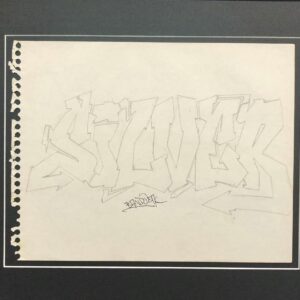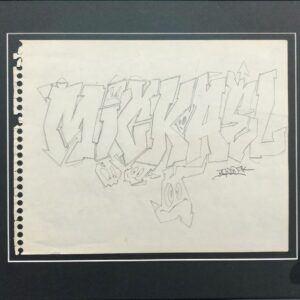Il est inimaginable de penser à ce que le public appelle “graffiti” en Europe, sans mentionner le nom de Bando, et contempler l’influence massive qu’il aurait exercée sur la culture. Ayant été introduit à la culture dite “Writing” par Bear 167, Bando était le premier qui s’était mis à écrire son nom dans ce style venu de New York; sur les palissades du Louvre, dans les catacombes, et sur les quais de la Seine, ramenant un autre langage visuel au paysage urbain parisien que les pochoirs et autres sigles qui existaient jusqu’alors. Même si il fait rapidement des émules, son sens singulier de l’esthétisme fut de lui un innovateur hors-paire; absorbant les traditions, les rythmes et la dynamique autour des métros de New York, tout en rajoutant sa touche personnelle, qui finira par définir ce qui deviendrait le “style européen”.
Toute l’Europe passait par Paris, à partir de 1985, et le style de Bando, nourrit d’avantage par ses rencontres avec Mode2 et les TCA, venues de Londres, puis avec Shoe et les USA venus d’Amsterdam, s’affûtait pour établir sa réputation comme “Parrain du graffiti Européen”. Les photos de ses murs dans Spraycan Art confirment ce statut. Copié mais jamais égalé par beaucoup de ses contemporains ainsi que les générations suivantes, son nom portera toujours un aura particulier dans l’histoire de cette culture. S’étant retiré de l’avant de la scène au début des années 90s, pour poursuivre ses projets musicaux (les labels mythiques comme Desco ou Soul Fire Records), puis se jetant à fond dans la spéléologie, rappelant ses explorations des catacombes de Paris au début des années 80s; nous avons la chance et l’honneur qu’il aurait choisit d’exposer quelques dessins, et surtout de nouvelles œuvres chez nous. Les fonds de ses toiles nous renvoient vers l’époque où Bando était le maître incontestable des pièces en chrome avec lesquelles il couvrait les murs de Paris et sa banlieue. Des tons rougeâtres du Madagascar (sa plus récente expédition), aux couleurs plus sombres de la Seine Saint Denis, ou du jardin de sa mère dans le 7ème arrondissement de Paris (adresse mythique par laquelle serait passée la crème de la crème de la scène Européenne); ces fonds nous rappellent ces murs qui étaient couverts de ses lettres, la grande majorité desquels auraient disparu depuis longtemps. Peut-être resteraient-ils encore quelques vieux fantômes par ci et par là. Les dessins eux, représentent le rituel quotidien qui était le sien des années durant; le travail des lettres et la recherche de nouvelles formes, explorant les équilibres les plus difficiles, du matin au soir. Seule “l’approvisionnement” en bombes de peinture venait perturber ce rythme, avant les missions nocturnes qui laisseraient leurs traces pour les jours ou les années à venir.
It is unimaginable to think of what the public calls « graffiti » in Europe without mentioning Bando’s name and contemplating the massive influence he would have had on the culture. Having been introduced to the « Writing » culture by Bear 167, Bando was the first to write his name in this New York style; on the palisades of the Louvre, in the catacombs, and on the quays of the Seine, bringing another visual language to the Parisian urban landscape than the stencils and other acronyms that existed until then. Although he quickly became an emulator, his singular sense of aesthetics made him an outstanding innovator; absorbing the traditions, rhythms and dynamics around the New York subways, while adding his personal touch, which would eventually define what would become the « European style ».
All of Europe was passing through Paris, starting in 1985, and Bando’s style, further fueled by his encounters with Mode2 and TCA, from London, and then with Shoe and USA from Amsterdam, was sharpening to establish his reputation as the « Godfather of European Graffiti ». The photos of his walls in Spraycan Art confirm this status. Copied but never equaled by many of his contemporaries and subsequent generations, his name will always carry a special aura in the history of this culture. Having retired from the front of the scene in the early 90s, to pursue his musical projects (mythical labels like Desco or Soul Fire Records), then throwing himself into caving, recalling his explorations of the catacombs of Paris in the early 80s; we are fortunate and honored that he would have chosen to exhibit some of his drawings, and especially some new works here. The backgrounds of his paintings take us back to the time when Bando was the undisputed master of the chrome pieces with which he covered the walls of Paris and its suburbs. From the reddish tones of Madagascar (his most recent expedition), to the darker colors of the Seine Saint Denis, or his mother’s garden in the 7th arrondissement of Paris (a mythical address through which the cream of the crop of the European scene would have passed); these backgrounds remind us of those walls that were covered with his letters, the vast majority of which would have disappeared long ago. Perhaps there are still some old ghosts here and there. The drawings represent the daily ritual that was his for years; the work of the letters and the search for new forms, exploring the most difficult balances, from morning to night. Only the « supply » of spray paint came to disturb this rhythm, before the nightly missions that would leave their traces for the days or years to come.

